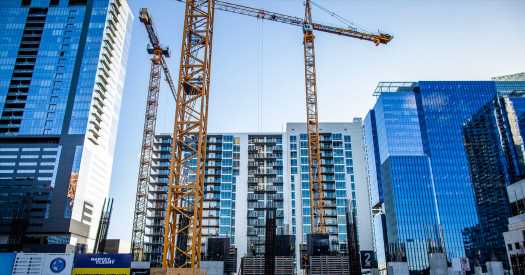Financial Stability Experts at the Fed Turn a Wary Eye on Commercial Real Estate
Federal Reserve financial stability experts are on the lookout for weaknesses after a year of rising interest rates — and as they survey the potential risks confronting the system, they are increasingly watching office loans and other commercial real estate borrowing.
Fed officials have lifted borrowing costs rapidly over the past year — to just above 5 percent from near-zero in early 2022 — to cool rapid inflation by slowing the economy. So far, the fallout from that abrupt change has been most obvious in the banking sector. A series of high-profile banks have collapsed or faced turmoil in recent weeks partly because they were poorly prepared for heftier borrowing costs.
But Fed staff members and market experts whom they survey cited commercial real estate as another area worth watching in the central bank’s twice-annual Financial Stability Report, which was released Monday.
The jump in interest rates over the past year “increases the risk” that commercial borrowers will not be able to refinance their loans when the loans reach the end of their term, Fed staff wrote in the report, noting that commercial real estate values remain “elevated.”
“The magnitude of a correction in property values could be sizable and therefore could lead to credit losses by holders of C.R.E. debt,” the report said — noting that many of those holders are banks, and particularly smaller banks.
“The Federal Reserve has increased monitoring of the performance of C.R.E. loans and expanded examination procedures for banks with significant C.R.E. concentration risk,” the report said.
The Fed’s comments on commercial real estate amounted to muted watchfulness rather than a full-throated warning — but they come at a time when many investors and economists are closely monitoring the sector. The outlook for office buildings in downtown areas, where workers have not fully returned after a shift to remote work that began during the coronavirus pandemic, has emerged as a particular concern on Wall Street.
The report included a survey of 25 professionals at broker-dealers, investment funds, research and advisory organizations, and universities, and those respondents ranked commercial real estate as their fourth-biggest financial stability concern — behind risks from interest rate increases, banking sector stress, and U.S.-China tensions, but ahead of Russia’s war in Ukraine and an impending fight in Congress about raising the debt limit.
“Many contacts saw real estate as a possible trigger for systemic risk, particularly in the commercial sector, where respondents highlighted concerns over higher interest rates, valuations and shifts in end-user demand,” the report said.
The Fed’s stability report also focused on risks to the economy that might come from the recent banking sector turmoil, which many officials are worried might prompt banks to pull back when it comes to lending. A Fed survey of bank loan officers released on Monday showed that demand for many types of loans has fallen in recent months, and it is becoming gradually harder to borrow.
Worries could “lead banks and other financial institutions to further contract the supply of credit to the economy,” the Fed report said. “A sharp contraction in the availability of credit would drive up the cost of funding for businesses and households, potentially resulting in a slowdown in economic activity.”
And if banks pull back in a dramatic way, it could have knock-on effects, the Fed report warned.
“With a decline in profits of nonfinancial businesses, financial stress and defaults at some firms could increase,” the report said, especially because companies are very indebted — which puts them on dicier footing if business goes badly.
Source: Read Full Article

